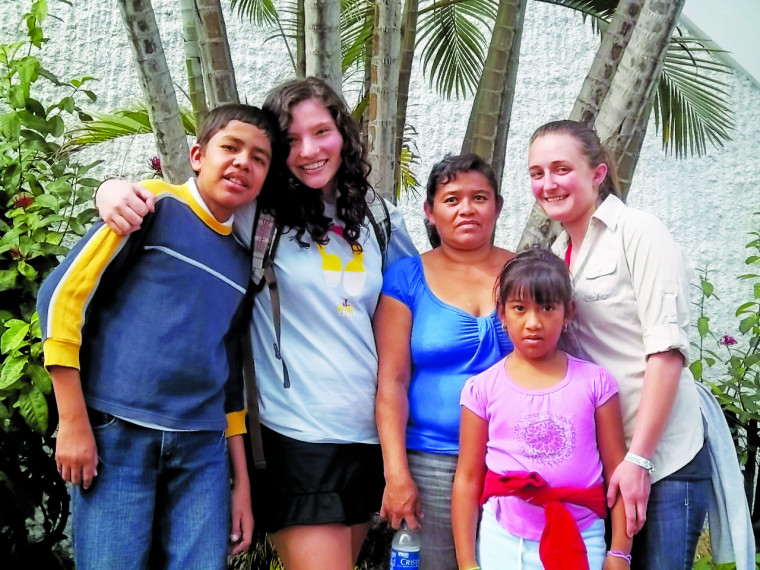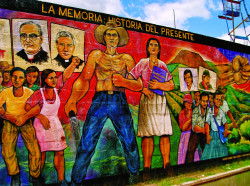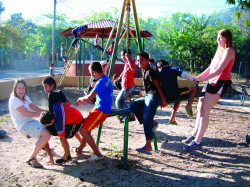Finding History and Inspiration in El Salvador
Open gallery

When Molly Hetz BA’11 first volunteered in the rural village of Guarjila in northern El Salvador as a high school student, she immediately connected with the people there and knew she needed to return.
“What first struck me about the community in Guarjila was how compassionate and accepting the people were,” said Hetz, a sociology/anthropology major. “They showed me a different model for community, one in which all people are accepted and involved regardless of their physical or mental abilities.”
In the years since, Hetz has made five more trips to El Salvador, building a working relationship with the Tamarindo Community, an organization that was founded after the country’s civil war ended in 1992. (The organization takes its name from a native, fruit-bearing tree called the tamarind. These trees were among the few things left standing after the war and still inspire the citizens today.) The organization’s mission is to build a better future for people living in Guarjila through initiatives such as health clinics, microbusiness development programs to discourage families from emigrating, and educational and recreational programs for youth.
Hetz’s commitment to El Salvador—and her indelible experiences there over the years— inspired her to bring friends to the Tamarindo Community. This spring, she organized an alternative spring break trip to send a delegation of Lewis & Clark students to El Salvador to participate in the work of the Tamarindo Community and to learn about El Salvador’s tumultuous history firsthand.

Angelica Pulido-Westlake CAS ’13 helped organize the trip after visiting Guarjila with Hetz last summer. Pulido-Westlake said she was opened to a world she had never experienced before, calling the trip a “living classroom.”
“The Tamarindo Community in Guarjila has shown me what it means for a postwar, Third World community to struggle for and successfully obtain the means of self-improvement,” Pulido-Westlake wrote about her experience. “The mixture of joy, tragedy, peace, violence, militancy, activism, and love that makes up El Salvador is one of the most powerful representations of a people I have ever encountered.”
In addition to Hetz and Pulido-Westlake, 10 other students made the journey: Emily Cousins CAS ’12, Jonas Fahnestock CAS ’14, Dale Forrister CAS ’14, Amy Huang CAS ’13, Jessica Lodal BA’11, Tracy Marvin CAS ’13, Mia McLaughlin CAS ’14, Kaylin Preston CAS ’14, Lucy Roberts CAS ’14, and Rachel Wolf CAS ’12.

The Student-Directed Alternative Break Program is just one of the many ways the center helps students become innovative leaders and citizens of the world. The center works with students throughout their time at Lewis & Clark to help them discover their goals and interests, connect to opportunities in the community that enrich their academic experience, and prepare for successful lives beyond college.
More L&C Magazine Stories
Lewis & Clark Magazine is located in McAfee on the Undergraduate Campus.
MSC: 19
email magazine@lclark.edu
voice 503-768-7970
fax 503-768-7969
The L&C Magazine staff welcomes letters and emails from readers about topics covered in the magazine. Correspondence must include your name and location and may be edited.
Lewis & Clark Magazine
Lewis & Clark
615 S. Palatine Hill Road MSC 19
Portland OR 97219

